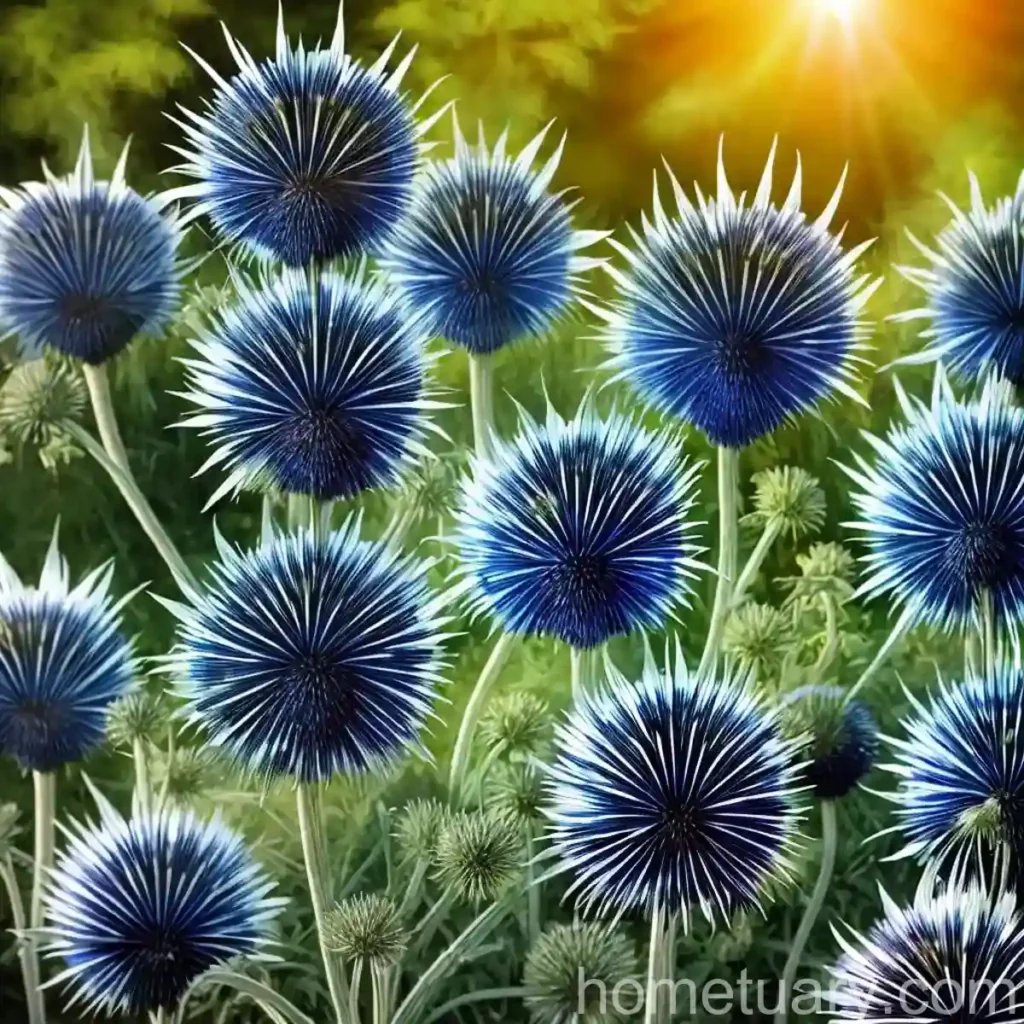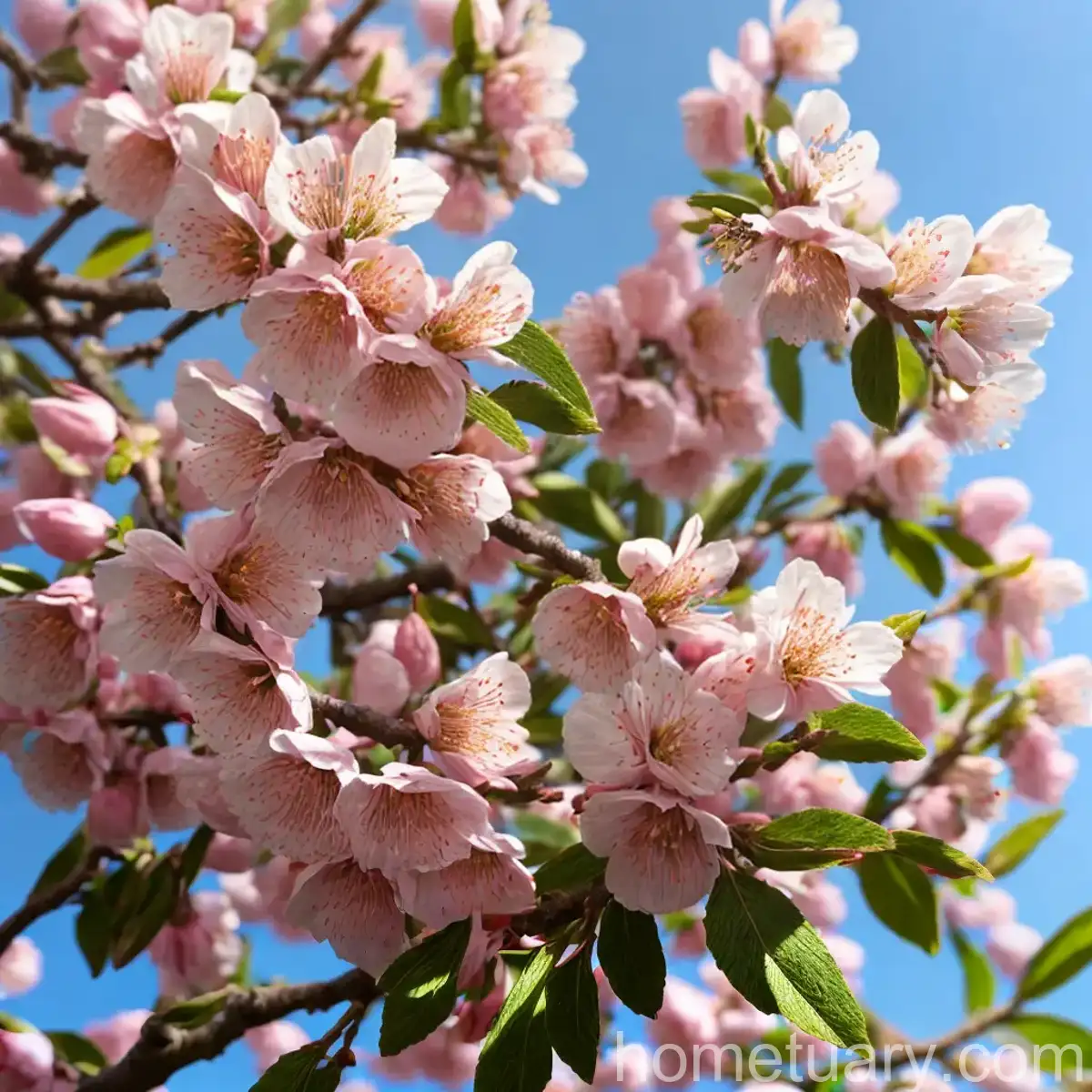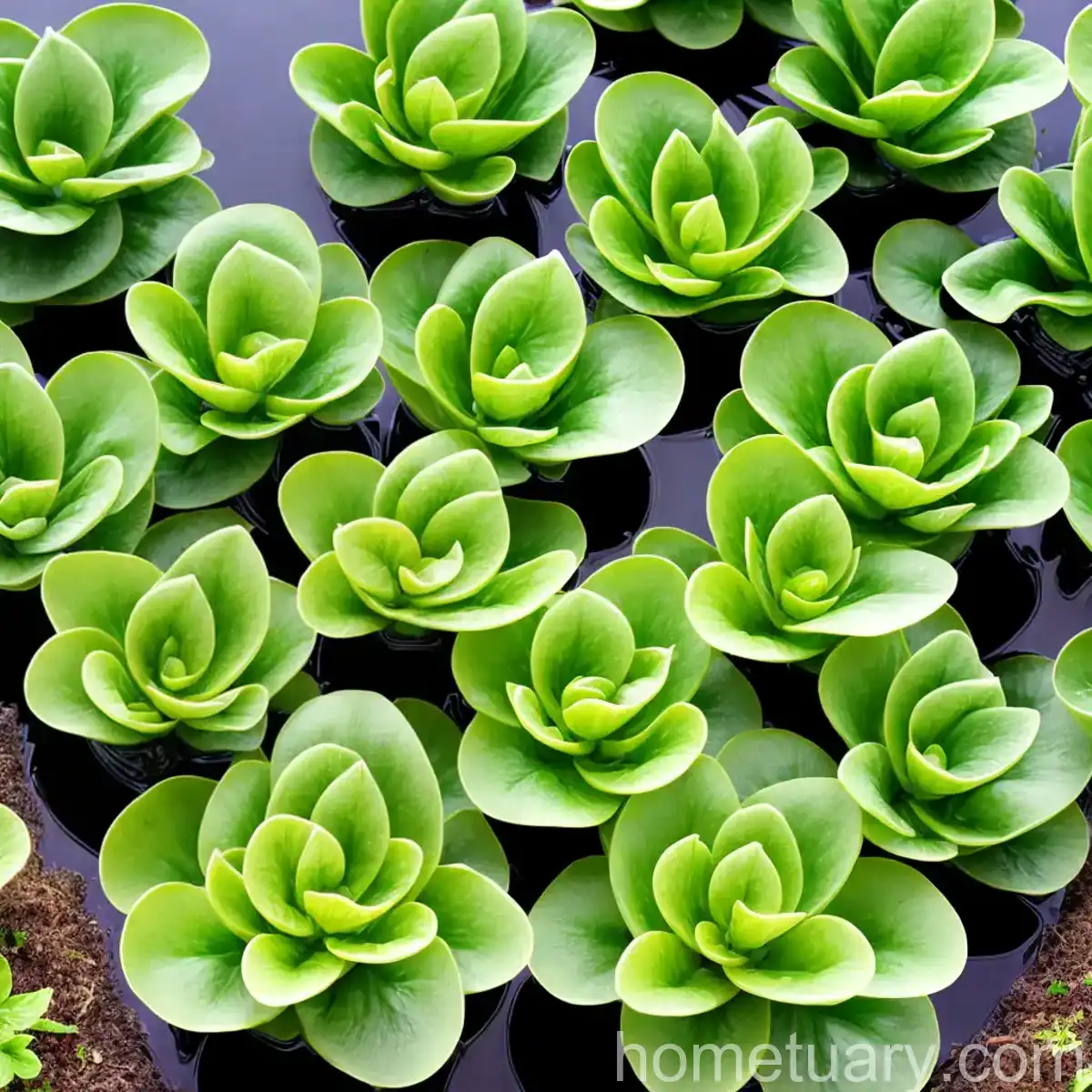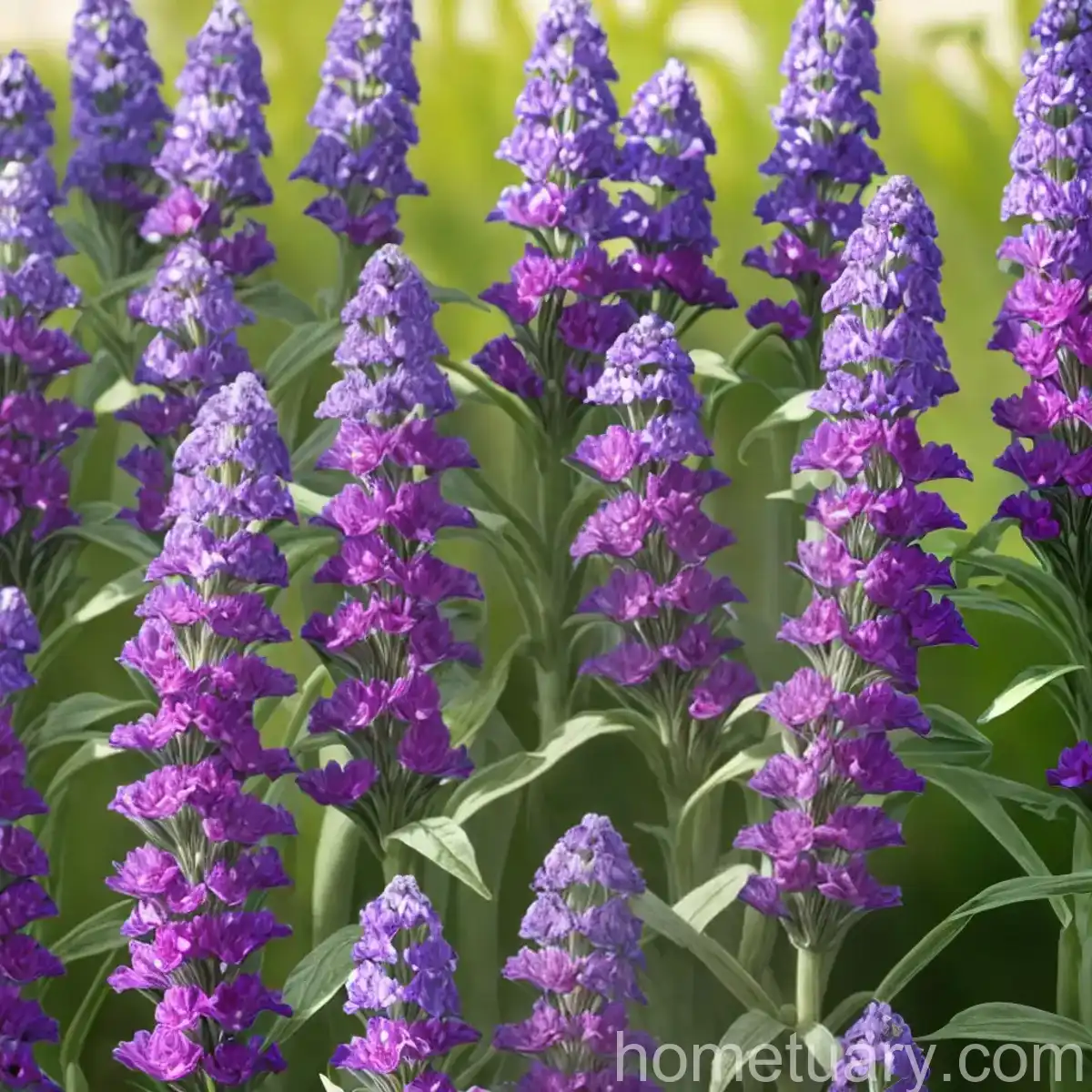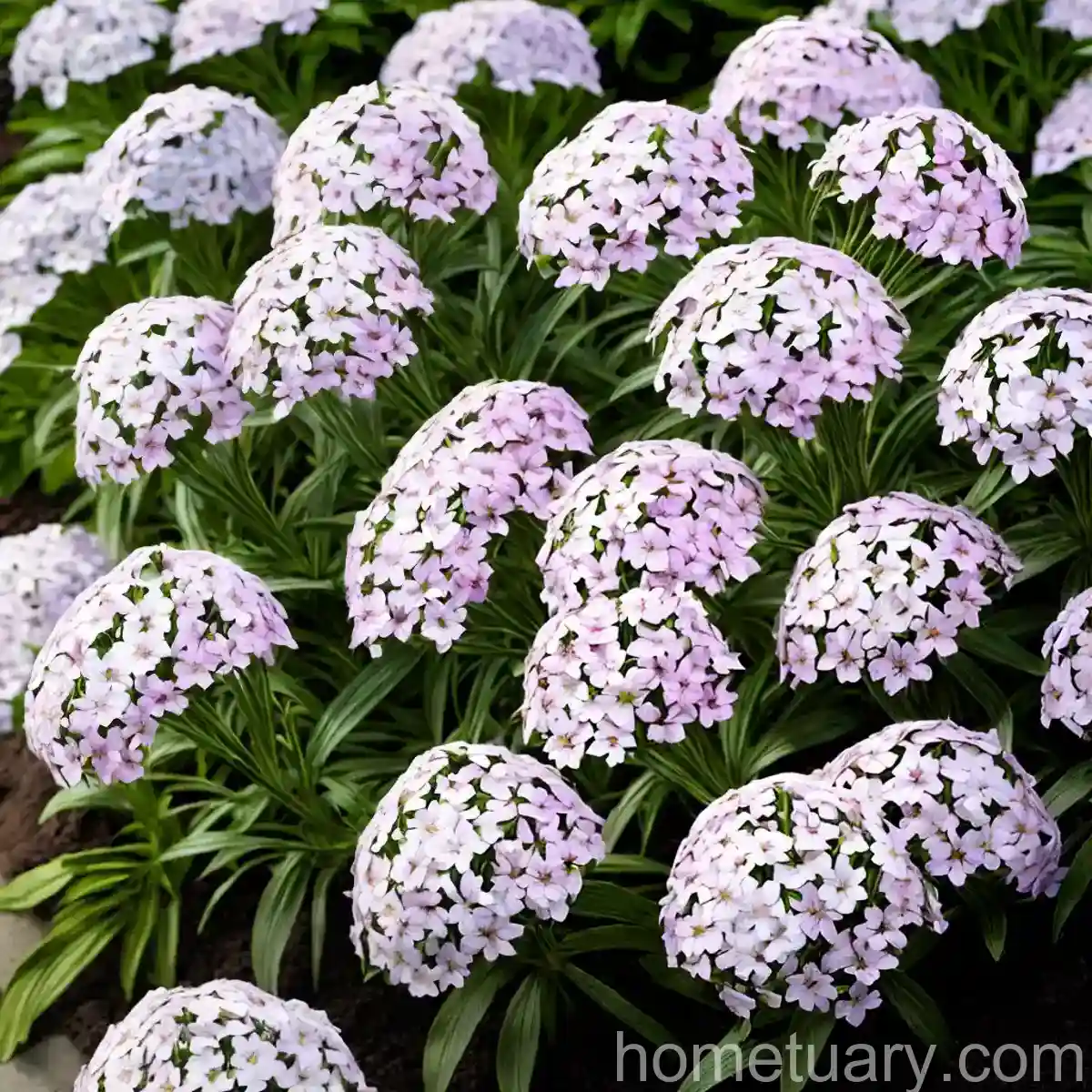The Great Globe Thistle (Echinops sphaerocephalus): A Comprehensive Guide
Plants have always fascinated us with their diversity, beauty, and vital role in the environment. They come in different shapes, sizes, and colors, each with its unique characteristics and requirements. In this guide, we explore the Great Globe Thistle (Echinops sphaerocephalus), a stunning and versatile plant that adds charm and ecological value to gardens and landscapes.
What is the Great Globe Thistle (Echinops sphaerocephalus)?
The Great Globe Thistle, scientifically known as Echinops sphaerocephalus, is an herbaceous perennial plant belonging to the Asteraceae family. It is native to Europe and Asia, where it can be found in grasslands, meadows, and open woodlands. This striking plant is known for its globe-shaped, spiky flower heads and deeply lobed, spiny leaves. It blooms in summer, attracting bees, butterflies, and other pollinators to its nectar-rich flowers.
Key Takeaways – Great Globe Thistle (Echinops sphaerocephalus)
Before delving into the specifics of cultivating and caring for the Great Globe Thistle, let’s summarise the key takeaways of this plant:
- Plant Name: Great Globe Thistle (Echinops sphaerocephalus)
- Description: Globe-shaped, spiky flower heads, deeply lobed, spiny leaves
- Characteristics: Herbaceous perennial, nectar-rich flowers, attracts pollinators
- Cultivation: Native to Europe and Asia, thrives in grasslands, meadows, and open woodlands
- Uses: Ornamental, ecological value, wildlife attraction
Now that we have an overview of the Great Globe Thistle, let’s explore its cultivation, uses, and maintenance in more detail.
Culture
Cultivating the Great Globe Thistle requires an understanding of its cultural preferences, including its water, sunlight, soil, and other requirements. By providing the right growing conditions, you can ensure the health and vitality of this remarkable plant.
Water
Great Globe Thistles are well-adapted to withstand dry conditions and are generally drought-tolerant once established. However, during the initial establishment period and extended dry spells, regular watering is essential to promote healthy growth and flowering. It is important to strike a balance, as these plants do not tolerate waterlogged soil.
Water Requirements:
– Establishment: Regular watering to aid establishment
– Mature Plants: Tolerant of dry conditions, occasional deep watering during prolonged dry spells
Sunlight
As sun-loving plants, Great Globe Thistles thrive in full sun or partial shade. Providing ample sunlight is crucial for promoting flower production and maintaining sturdy, upright growth. In regions with hot summers, some afternoon shade can help protect the plants from excessive heat.
Sunlight Preferences:
– Full Sun: 6-8 hours of direct sunlight daily
– Partial Shade: Ideal in regions with intense afternoon sun
Soil
When it comes to soil, Great Globe Thistles prefer well-draining, moderately fertile soil. They can tolerate various soil types, including loamy, sandy, or rocky soils, as long as they offer good drainage. Amending heavy clay soils with organic matter can improve drainage and create a more hospitable environment for these plants.
Soil Preferences:
– Drainage: Well-draining soil to prevent waterlogging
– Fertility: Tolerant of moderately fertile soils
– Soil Types: Adaptable to loamy, sandy, or rocky soils
Uses
The Great Globe Thistle offers a range of uses, making it a valuable addition to gardens, landscapes, and even floral arrangements. Understanding its diverse applications can help you make the most of this plant’s unique qualities.
Ornamental Value
One of the primary uses of the Great Globe Thistle is its ornamental value. The striking, spherical flower heads and architectural form make it an eye-catching addition to perennial borders, wildflower meadows, and naturalistic landscapes. Additionally, the spiky texture of the flower heads adds visual interest and contrasts well with softer, finely textured plants.
Ecological Value
In addition to its aesthetic appeal, the Great Globe Thistle contributes to the ecological health of the garden. Its nectar-rich flowers attract a variety of pollinators, including bees, butterflies, and beneficial insects, making it a valuable plant for supporting local biodiversity. By incorporating Great Globe Thistles into garden designs, you can create vibrant and dynamic ecosystems.
Wildlife Attraction
The nectar and pollen produced by the Great Globe Thistle make it a magnet for wildlife. Beyond attracting pollinators, the plant also provides food and habitat for birds and small mammals. Its durable structure and resistance to browsing animals make it a functional and low-maintenance addition to wildlife-friendly gardens.
Floral Arrangements
The unique appearance of the Great Globe Thistle also lends itself to floral arrangements and dried flower crafts. The dried flower heads retain their shape and color, making them an appealing and long-lasting addition to bouquets, wreaths, and decorative displays. Whether used fresh or dried, these distinctive blooms add texture and character to floral designs.
Fertilizer
In terms of fertilizer requirements, the Great Globe Thistle generally thrives in lean to moderately fertile soils. Excessive fertilization can lead to overly lush growth, potentially compromising the plant’s natural form and flowering performance. In most cases, these plants can obtain adequate nutrients from the soil without the need for regular fertilization.
Fertilizer Recommendations:
– Moderate Fertility: Prefers lean to moderately fertile soils
– Minimal Fertilization: Often does not require additional fertilization
– Nutrient Uptake: Capable of obtaining nutrients from the soil
Pruning
Pruning plays a role in maintaining the appearance and vitality of Great Globe Thistles. While these plants generally have a natural, architectural form, periodic pruning can help manage their size, promote airflow, and rejuvenate their growth. Additionally, removing spent flower heads can encourage prolonged blooming and prevent self-seeding in garden settings.
Pruning Tips:
– Deadheading: Remove spent flower heads to encourage continuous blooming
– Rejuvenation: Cut back stems to near-ground level in late winter to stimulate vigorous new growth
– Form Maintenance: Trim stray or damaged growth to maintain the plant’s natural form
Propagation
Great Globe Thistles can be propagated through several methods, including division, seed sowing, and stem cuttings. Each technique offers its advantages and challenges, allowing you to choose the most suitable approach based on your resources and goals.
Division
Dividing established clumps of Great Globe Thistles is a reliable way to propagate new plants. This method is best carried out in early spring or late summer, allowing the divided sections to establish before the onset of winter or summer dormancy. Divisions should include healthy roots and shoots, ensuring their potential for successful establishment.
Division Process:
1. Dig up mature clumps, ensuring the presence of healthy roots and shoots
2. Gently tease apart the clump into smaller sections using a sharp, sterile tool
3. Replant the divisions in prepared soil, water thoroughly, and provide appropriate care
Seed Sowing
Growing Great Globe Thistles from seeds is an effective approach for raising new plants and exploring genetic diversity. The seeds can be sown directly in the garden or started indoors for later transplanting. Optimal germination conditions include consistent moisture and moderate temperatures.
Seed Sowing Steps:
1. Prepare a seedbed with well-draining soil in a sunny location
2. Sow the seeds at the recommended depth, lightly covering them with soil
3. Keep the soil consistently moist until germination occurs
4. Transplant seedlings to their permanent locations once they have developed sufficient size and vigor
Stem Cuttings
While less commonly used than division and seed sowing, stem cuttings offer an asexual propagation method for Great Globe Thistles. This method involves taking stem sections from the parent plant and encouraging them to develop roots and shoots, ultimately forming independent plants.
Stem Cutting Process:
1. Select healthy, non-flowering stems for cutting, typically in late spring or early summer
2. Trim the stems into sections of appropriate length, ensuring the presence of several nodes
3. Dip the cut ends in a rooting hormone to promote root development
4. Place the cuttings in a well-draining rooting medium and provide consistent moisture and warmth
Container Popularity
Great Globe Thistles can also thrive in container gardens, allowing individuals with limited outdoor space or unsuitable soil conditions to enjoy the plant’s beauty and ecological benefits. When growing these plants in containers, certain considerations and practices enhance their performance and longevity.
Container Selection
Selecting the appropriate container is crucial for the successful cultivation of Great Globe Thistles. Ideally, choose containers that provide ample space for root development, good drainage, and stability. Materials such as terracotta, wood, and lightweight composite blends are suitable choices for container gardening.
Container Criteria:
– Size: Provides sufficient space for root growth and stability
– Drainage: Has adequate drainage holes to prevent waterlogging
– Material: Selects durable, breathable materials conducive to root health
Soil Mix
The soil mix used for container-grown Great Globe Thistles should offer excellent drainage and aeration while retaining adequate moisture. A blend of high-quality potting mix and coarse materials such as perlite or sand can create a well-balanced growing medium for these plants.
Soil Mix Components:
– Potting Mix: High-quality, well-draining potting mix
– Aeration: Includes perlite, sand, or similar materials for improved drainage
– Moisture Retention: Balances drainage with sufficient moisture retention
Watering
Container-grown Great Globe Thistles may require more frequent watering than those in garden beds, as containers can dry out more rapidly. Monitoring soil moisture and adjusting watering frequency based on environmental conditions can help maintain optimal growing conditions for the plants.
Watering Considerations:
– Monitoring: Checks soil moisture regularly and waters when the top inch of the soil feels dry
– Consistency: Strives for consistent moisture to support healthy growth
– Avoid Waterlogging: Ensures proper drainage to prevent waterlogging in containers
Fertilization
In containers, Great Globe Thistles may benefit from periodic fertilization to supplement the nutrients available in the growing medium. Applying a balanced, slow-release fertilizer according to the manufacturer’s recommendations can support the plants’ growth and flowering throughout the growing season.
Fertilization Guidelines:
– Balanced Fertilizer: Utilizes a balanced, slow-release fertilizer for container-grown plants
– Frequency: Follows the manufacturer’s recommendations for application frequency
– Avoid Excess: Prevents over-fertilization to maintain the plant’s natural growth habits
Common Diseases
Despite their overall resilience, Great Globe Thistles may be susceptible to certain diseases that can impact their health and appearance. Recognizing and understanding these potential issues enables proactive management to maintain the plants’ vigor.
Disease Diagnosis
The following diseases are commonly associated with Great Globe Thistles:
- Powdery Mildew (Erysiphe cichoracearum): Powdery mildew manifests as a white, powdery coating on the leaves and stems, often in humid conditions. It can weaken the plants and compromise their ornamental value.
- Septoria Leaf Spot (Septoria echinopsidis): Septoria leaf spot causes small, dark spots on the leaves, potentially leading to defoliation and reduced vigor.
- Root Rot (Various Pathogens): Prolonged waterlogging or overly compacted soil can lead to root rot, characterized by rotting roots and a decline in overall plant health.
Disease Management
Implementing proactive measures can help prevent and manage common diseases affecting Great Globe Thistles. These strategies focus on promoting plant health, maintaining optimal growing conditions, and addressing early signs of disease.
Disease Management Practices:
– Good Air Circulation: Promotes airflow around the plants to reduce humidity and minimize powdery mildew risk
– Avoid Overhead Watering: Minimizes moisture on the leaves, reducing the potential for foliar diseases
– Well-Draining Soil: Ensures adequate soil drainage to prevent waterlogged conditions and root infections
– Pruning Practices: Removes affected plant parts to limit disease spread and promote new growth
Common Pests
In addition to diseases, Great Globe Thistles may encounter certain pest issues that can impact their appearance and overall health. Identifying these pests and implementing suitable control methods is essential to safeguard the plants from potential harm.
Pest Identification
The following pests are frequently associated with Great Globe Thistles:
- Aphids (Aphidoidea): These small, sap-sucking insects can weaken the plants and distort new growth when present in large numbers.
- Thrips (Thysanoptera): Thrips cause silvery, stippled patches on the leaves and can transmit plant viruses, posing a threat to the plants’ health.
- Snails and Slugs (Gastropoda): These mollusks feed on the leaves, leaving ragged holes and damage, particularly in humid conditions.
Pest Control
Implementing pest control measures can help manage infestations and minimize the impact of common pests on Great Globe Thistles. Both natural and intervention-based approaches can be effective in preserving plant health.
Pest Control Strategies:
– Natural Predators: Encourages beneficial insects and birds that prey on aphids and thrips
– Physical Barriers: Uses copper tape or diatomaceous earth to deter snails and slugs
– Horticultural Oils: Applies horticultural oils to suffocate and control aphid and thrip populations
– Handpicking: Removes snails and slugs by hand and uses traps to reduce populations
Botanist’s Tips
As a botanist, it’s important to appreciate the Great Globe Thistle’s ecological value, resilience, and ornamental appeal. Here are some valuable insights and tips to guide the successful cultivation and appreciation of these remarkable plants.
Echinops sphaerocephalus: An Ecologically Valuable Plant
- The Great Globe Thistle, Echinops sphaerocephalus, is a valuable pollinator plant, attracting a diverse array of bees, butterflies, and other beneficial insects to the garden.
- Its tolerance of dry conditions, coupled with its nectar-rich flowers, makes it a resilient and low-maintenance addition to drought-tolerant landscapes and xeriscapes.
Cultivating Charismatic Landscapes
- When designing landscapes, consider incorporating Great Globe Thistles to add vertical interest, texture, and enduring beauty to mixed plantings.
- Pair them with ornamental grasses, salvias, and other drought-tolerant perennials to create dynamic and water-wise landscapes with year-round appeal.
Sustainable Gardening Practices
- Embrace sustainable gardening practices that minimize the need for excessive irrigation, fertilization, and pesticide applications, in line with the Great Globe Thistle’s natural resilience.
- Aim to create biodiverse and wildlife-friendly garden spaces that support local ecosystems and contribute to the conservation of pollinators and native wildlife.
Fun Facts
To further acquaint ourselves with the Great Globe Thistle, let’s explore some fascinating and lesser-known facts about this captivating plant:
- The name “Echinops” is derived from the Greek words “echinos,” meaning “hedgehog,” and “ops,” meaning “appearance,” alluding to the spiky, globe-shaped flower heads.
- Great Globe Thistles are a favorite among flower arrangers, contributing a bold and architectural presence to floral compositions and dried arrangements.
- In its native habitat, Echinops sphaerocephalus plays a role in stabilizing and enriching the soil through its deep roots and ability to thrive in challenging conditions.
Links to External Resources
For further information and insights on the Great Globe Thistle (Echinops sphaerocephalus) and related topics, consider exploring the following external resources:
- Royal Horticultural Society (RHS): https://www.rhs.org.uk
- Missouri Botanical Garden: https://www.missouribotanicalgarden.org
- American Society for the Protection of Nature: https://www.natureprotects.org
In this comprehensive guide, we have delved into the captivating world of the Great Globe Thistle (Echinops sphaerocephalus), exploring its cultivation, uses, maintenance, and ecological significance. By embracing its unique characteristics and embracing sustainable gardening practices, we can appreciate and enrich our environments with this resilient and charismatic plant.
Would you like to delve even deeper into the world of plants? Let’s uncover the nuances and wonders of botanical diversity together.

